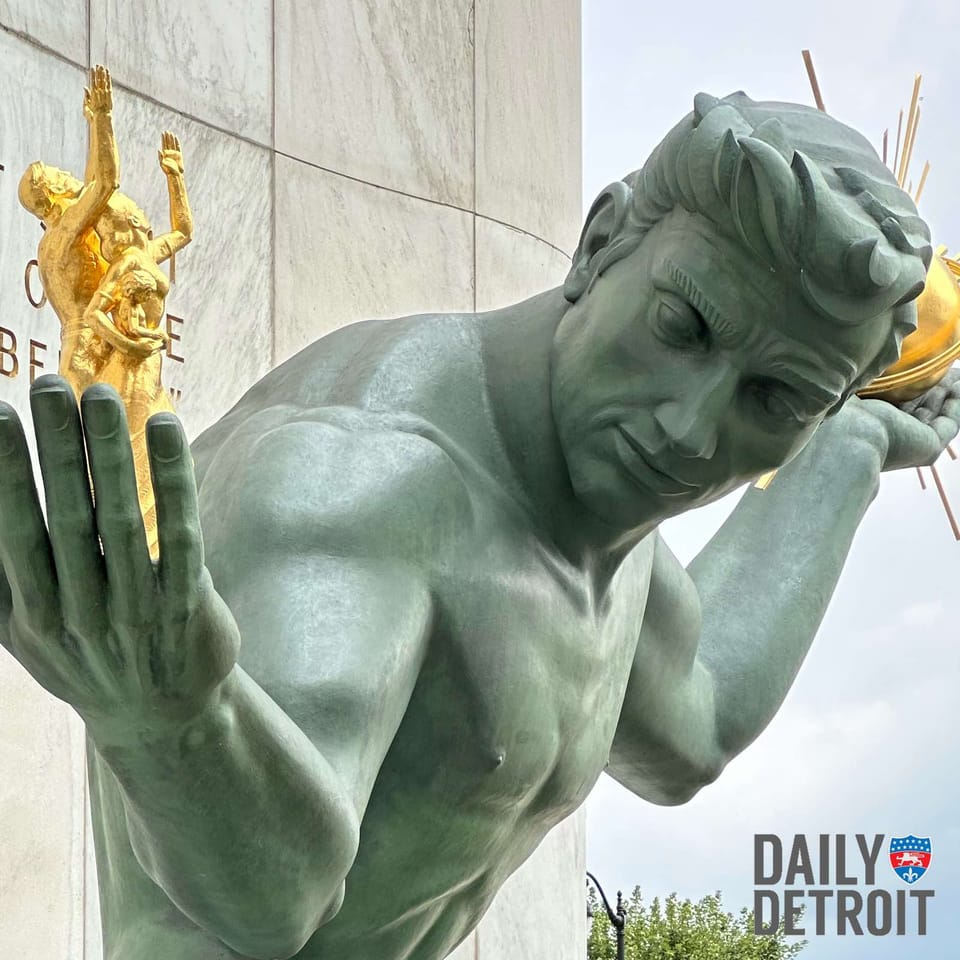The Detroit Renaissance Center is the building that most around the country know Detroit by. And its architect is gone.
That man was John C. Portman Jr., who died on Saturday at the age of 93 in Atlanta, Georgia.
Portman was also the mind behind various developments around the world such as the Peachtree Center in Atlanta; the Embarcadero Center in San Francisco; the Yintai Center in Beijing; and the Tomorrow Square in Shanghai.

He left his modern, futurist mark across the world.
When the Renaissance Center in Detroit opened, was the tallest hotel in the world. Conceived by Henry Ford II, the $350 million projects was one of many signature projects that leaders at the time tried to stop Detroit’s decline.
Portman’s design style was pretty consistent — and very “of his time” — but in Detroit that style had mixed impacts, especially during the first two decades since its construction.
When the project opened building by building in the 1970s, over the next few years many of the existing office buildings downtown emptied out for the refuge of the shiny concrete fortress or the suburbs.
There was a berm (removed in recent years) dividing the development from Jefferson Avenue. It was built as a self-contained “city within a city,” where you could drive in and not interact with anything in the rest of downtown. And even if you tried, the design made it very difficult to do so.
General Motors bought the 5.5 million-plus square foot facility in 1996 for a relative song. At the time, the automaker was considering leaving the city of Detroit all together.
Although the exact price wasn’t disclosed, the previous owner had bought it for just $72 million.
It had become horribly outdated and required lots of work. In many ways, the building did not live up to much of its promise until GM purchased it. Reports at the time of purchase refer to office workers “routinely getting lost” inside of the structure.
They made it their headquarters and moved tens of thousands of office workers there.
The buildings have undergone more than half a billion dollars of improvements to reconnect it to the city and help the building make more sense — including a Wintergarden atrium completed in 2001 that made the complex more accessible to the waterfront and an additional circulation ring walkway.
The now-named GMRENCEN continues to go through renovations, including redoing the lower floor to better showcase GM vehicles.
The Marriott in the tallest tower is still the second tallest hotel in the Western Hemisphere.
Next door to the east, there are rumblings of turning the sea of stark parking lots into livable spaces and plans to turn I-375 from a freeway into a boulevard that will let you access the water.














